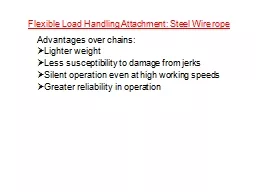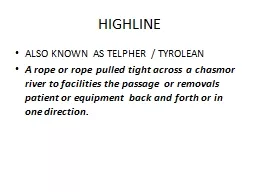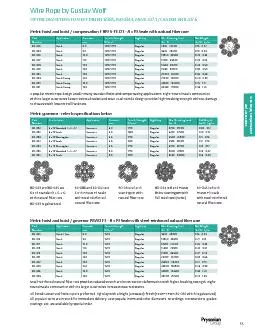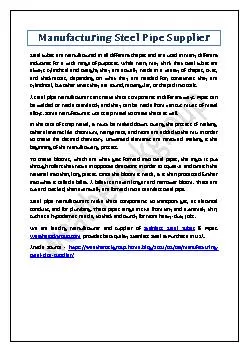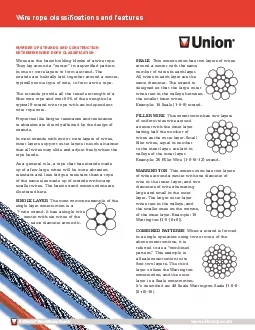PPT-Flexible Load Handling Attachment: Steel Wire rope
Author : dailyno | Published Date : 2020-08-27
Advantages over chains Lighter weight Less susceptibility to damage from jerks Silent operation even at high working speeds Greater reliability in operation Wire
Presentation Embed Code
Download Presentation
Download Presentation The PPT/PDF document "Flexible Load Handling Attachment: Steel..." is the property of its rightful owner. Permission is granted to download and print the materials on this website for personal, non-commercial use only, and to display it on your personal computer provided you do not modify the materials and that you retain all copyright notices contained in the materials. By downloading content from our website, you accept the terms of this agreement.
Flexible Load Handling Attachment: Steel Wire rope: Transcript
Download Rules Of Document
"Flexible Load Handling Attachment: Steel Wire rope"The content belongs to its owner. You may download and print it for personal use, without modification, and keep all copyright notices. By downloading, you agree to these terms.
Related Documents

